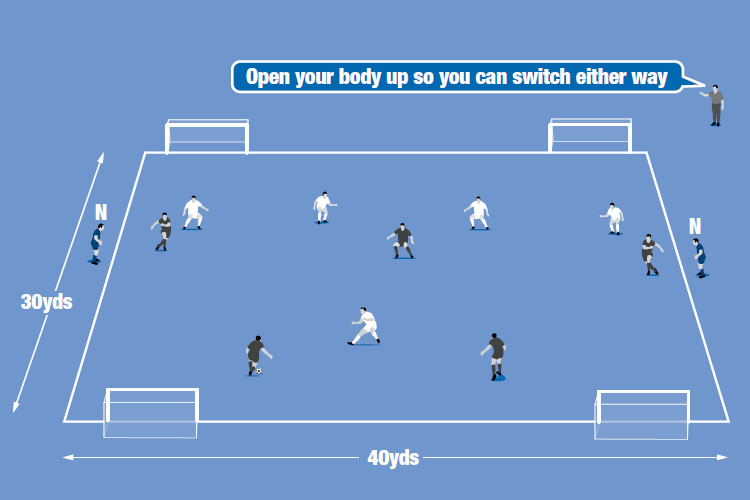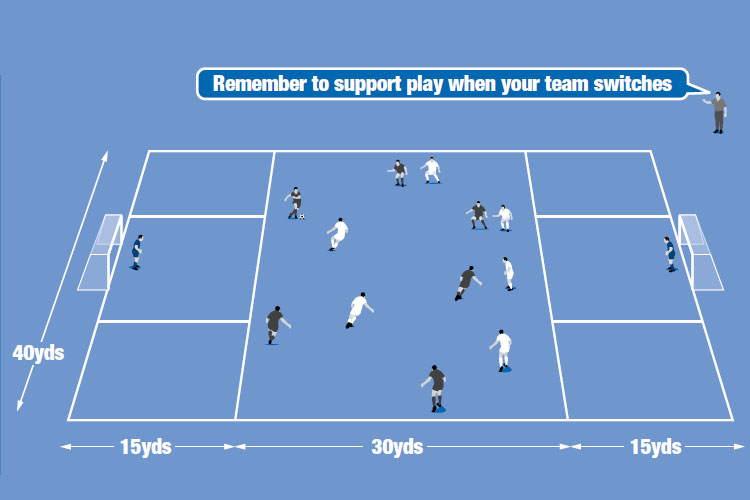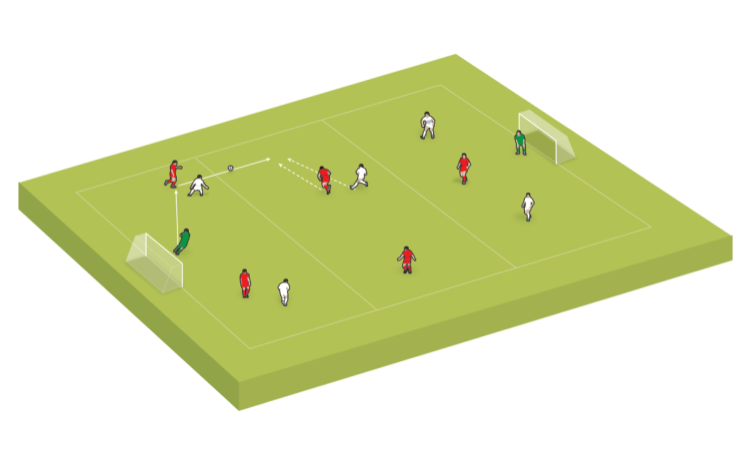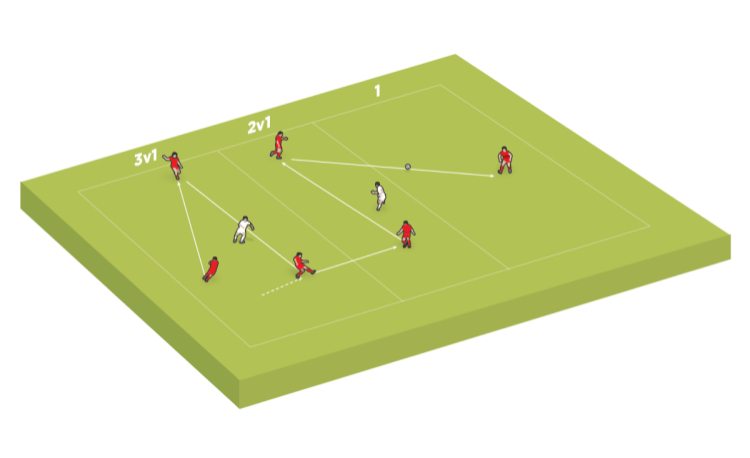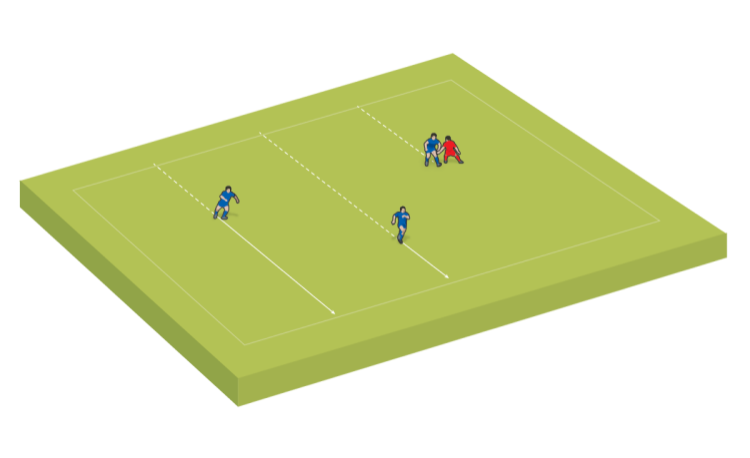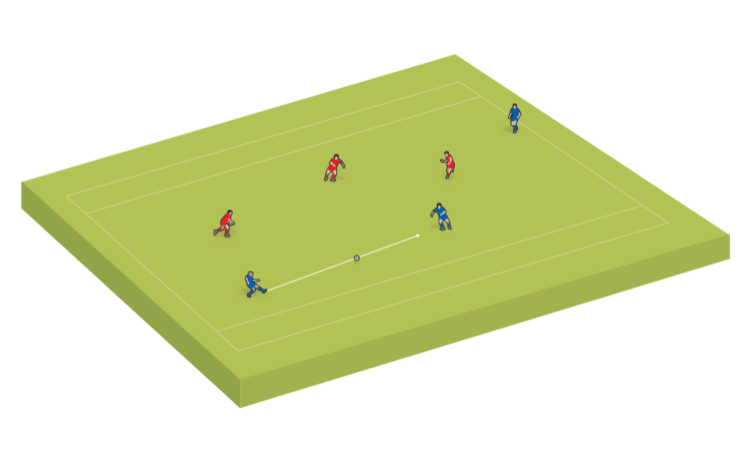Flick the switch
If you can improve your team’s ability to quickly switch play from one side of the pitch to the other, the attacking options are far greater.
What this session is about
- Switching play.
- Recognising space on the pitch.
- Attacking at speed.
What to think about
When play is congested down one side of the pitch, a quick switch of play (moving the ball to the opposite flank) can give the team a chance to attack 1v1 or space to dribble forward. Players must constantly be aware of their position on the field and where they will pass next when receiving the ball. In possession, teams must spread out and use the full width of the pitch to give themselves a chance to pass quickly and force the opponent to chase the ball.
Set-up
| Warm up | Session | Development | Game Situation | Warm Down |
|---|---|---|---|---|
| 10 minutes | 15 minutes | 15 minutes | 15 minutes | 5 minutes |
What you get your players to do
Mark out an area, as shown in the top picture. This is a continuous passing circuit using two balls.In one half of the circuit (A), players quickly pass the ball across the pitch in a conveyor-belt motion to get the ball from one side to the other at top speed.
This side of the circuit replicates a four-player defence, which switches the ball from one full back to the other.
In the opposite half of the circuit (B), players must combine with a long pass and then a second long pass to get the ball across the pitch – spreading players across the area will achieve greater distances between them. This replicates two central midfielders combining to pass wide.
After passing, the player must follow his pass and take up the next position on the circuit, this will mean players move to the opposite half and take part in the other drill.
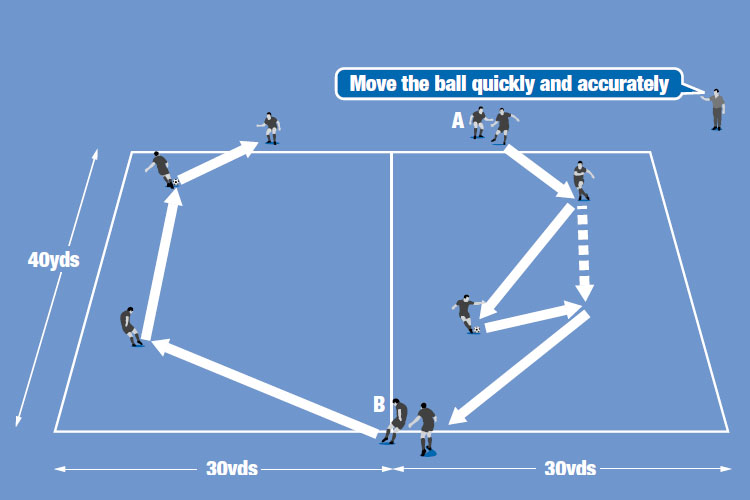
Players in group A switch play from one side to the other in a defensive pattern. Group B combines as midfielders with longer passes.
Development
Mark out an area with four mini/cone goals, as shown in the middle picture.Use two teams. Each has five players on the pitch while two neutral players (N) work on the outside of the pitch and play for the team in possession.
Neutral players are allowed to score goals as well as players on the pitch.
The aim for each team is to quickly switch play in order to create a chance to score in the opponent’s mini goals.
Related Files
Advanced-274-flick-the-switch.pdfPDF, 248 KB
Game situation
Mark out an area with shooting zones wide of each goal. Use two teams. Each team has a goalkeeper and six outfield players. The majority of the game is played in the central zone. The aim is to score in one of two ways:- Free a player to dribble into the wide zones to shoot at goal (encourage shots across goal).
- Create space in the middle of the pitch to shoot at goal from the central zone.
Newsletter Sign Up
Coaches Testimonials

Gerald Kearney, Downtown Las Vegas Soccer Club

Paul Butler, Florida, USA

Rick Shields, Springboro, USA

Tony Green, Pierrefonds Titans, Quebec, Canada
Subscribe Today
Discover the simple way to become a more effective, more successful soccer coach
In a recent survey 89% of subscribers said Soccer Coach Weekly makes them more confident, 91% said Soccer Coach Weekly makes them a more effective coach and 93% said Soccer Coach Weekly makes them more inspired.
*includes 3 coaching manuals
Get Weekly Inspiration
All the latest techniques and approaches
Soccer Coach Weekly offers proven and easy to use soccer drills, coaching sessions, practice plans, small-sided games, warm-ups, training tips and advice.
We've been at the cutting edge of soccer coaching since we launched in 2007, creating resources for the grassroots youth coach, following best practice from around the world and insights from the professional game.
More from us
© 2023 Soccer Coach Weekly
Part of Green Star Media Ltd. Company number: 3008779
We use cookies so we can provide you with the best online experience. By continuing to browse this site you are agreeing to our use of cookies. Click on the banner to find out more.
